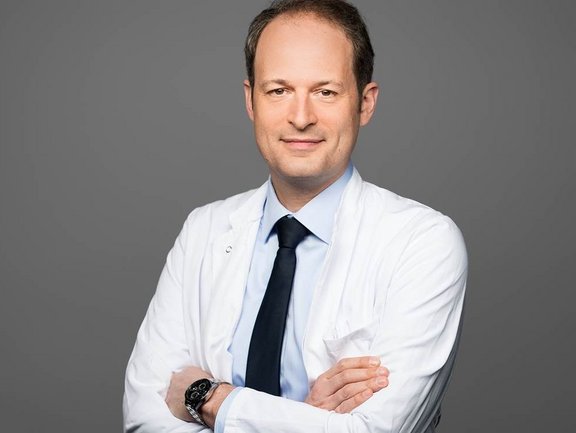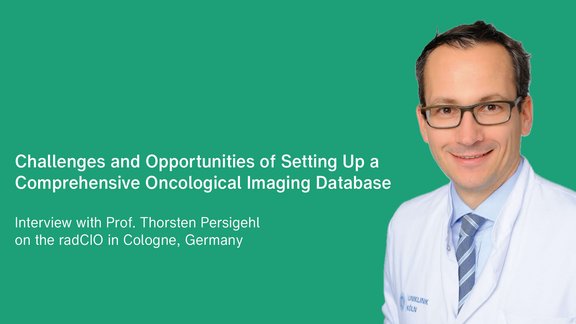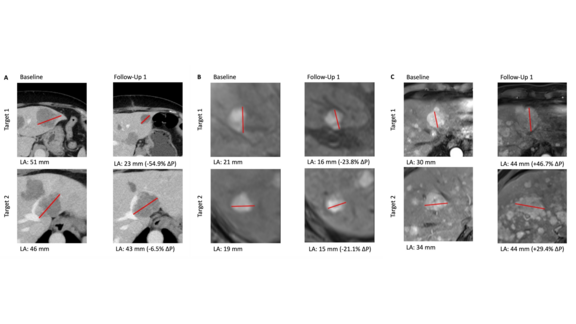The Bavaria-wide oncological radiology network (BORN) Project was launched on August 1, 2022, with the objective of improving cancer care in Bavaria by standardizing imaging and reporting. Through collaboration within the Bavarian Cancer Research Center (BZKF) network, it aims to establish a unified research environment that will benefit patients and healthcare professionals across Bavaria. In this interview, we speak with Prof. Thomas Kröncke, from the University Hospital Augsburg, who provides updates on the project's progress, highlights the challenges of working with medical data, and emphasizes the potential benefits of the project for both patients and healthcare professionals.
Prof. Kröncke, how has the idea for the BORN project come about? What was the main motivation for the project?
The original idea was brought up during a meeting of the Bavarian chairs of radiology. The discussion centered around the role of radiology in cancer care and how to improve our involvement in the activities of the Bavarian Centre for Cancer Research (BZKF). The BZKF's aim is to improve cancer care in Bavaria and make it accessible also to patients who don't live near specialized centers. While imaging can be done anywhere in Bavaria, there is a lack of uniformity and structure in both imaging and reporting.
From the beginning, our goal was to perform imaging examinations for tumor diseases uniformly throughout Bavaria, to evaluate them in a structured manner and to develop a secure IT structure for data collection and exchange - starting at the six Bavarian university hospitals. By working together within the BZKF network, we have now created a truly viable solution for standardizing imaging and reporting.
How do patients benefit from this project?
After clinical evaluation at the Bavarian university hospitals, the standardized examination strategies and reporting templates will be made available to other hospitals and practicing radiologists so that all patients in Bavaria can benefit from the same quality of reporting, regardless of where they live or receive treatment. A small example of what can be achieved is that duplicate examinations can be avoided. It sounds trivial now, but if a patient comes in with an external admission where information is missing because it was not collected, then we have to repeat the examination.
AI analysis can also be used to identify correlations and patterns in patient data that may not be obvious to us doctors, and these can help provide patients with more accurate diagnoses and treatment options. To really make use of AI analysis of structured data, big data is required. And these big data sets are currently still trapped in the silos of individual university hospitals.
What added value is there for the university hospitals? And how can the hospitals and private practices in Bavaria - and perhaps beyond - benefit from this?
We are striving to no longer conduct research in isolation at the individual university hospitals, but together as a network. An important point in this regard is interoperability, which is not always a reality in medicine. With the BORN project of the BZKF, we have created a harmonized research environment that enables us to design a unique data basis for cancer diagnosis and therapy, as well as for the development of image-based biomarkers and AI machine learning methods.
In the process, the data flows into a semantically structured model. They are transmitted exclusively anonymized and still remain interpretable thanks to the information encoded in the data model. Since the patient data remain in the context of the patient care, i.e. do not leave the individual hospitals at all, the obligations of the General Data Protection Regulation (GDPR) are fulfilled without any problems.
We must also ensure that we work together in large networks beyond the borders of Bavaria. And we can do that when we have created a solid data basis. Then we can, for example, participate in registries. Registries can help track trends in cancer care, monitor the effectiveness of treatments and identify areas with the potential for optimization. They can also provide valuable insights into prognosis and the types of therapies that are most effective for a particular type of cancer.
In addition, it's important to guarantee that the workflows are integrated seamlessly and function smoothly on a day-to-day basis, to ensure that they are accepted and used effectively in clinical practice.
What has been achieved in the BZKF BORN project so far?
We have established a multi-stage process that involves a lot of communication, which we have managed well. We have already completed the initial steps, which include standardizing the examination techniques and defining query parameters for the first six tumor diseases. Together with Mint Medical, we are now in the process of creating reporting templates for the six indications on the basis of the parameters we have defined.
We have actually completed the fundamental tasks very quickly and have moved on to the testing phase. Our objective during this phase is to examine how the setting operates in real-life and determine whether the parameters in the reporting templates are implemented in a user-friendly manner.
However, to make informed decisions regarding diagnoses and treatments, we require more than just radiological data. We also need linked data from various departments that pertain to the patient's illness, such as laboratory or pathology data. For this reason, we are already in contact with other disciplines, such as nuclear medicine specialists and the colleagues from pathology who are also part of the BZKF. This ensures that we consider interdisciplinary integration of data right from the start.
What do you think - in one or two sentences - is special about the BORN project?
Of course we know that we need to make better use of medical data. And BORN is a flagship project that shows how healthcare data should be handled and treated in the future.


